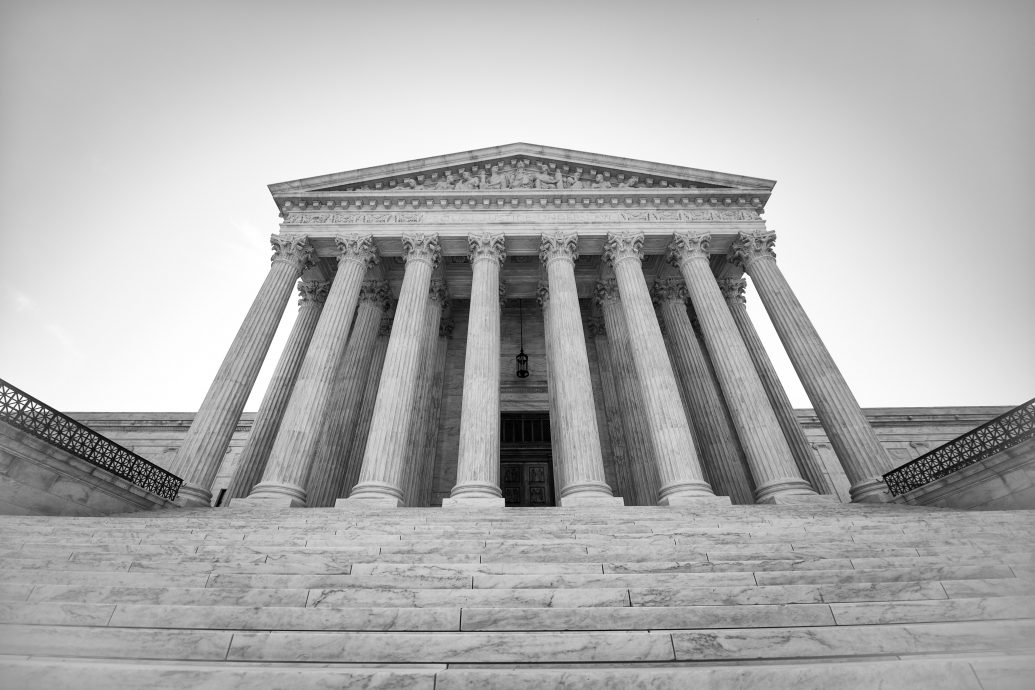Some Dissents Are More Equal Than Others
Anyone who has clerked for an appellate judge knows that assisting in writing a dissent is one of the better parts of the job. While a majority opinion, however important it is, almost always involves compromise, a dissenting opinion allows a judge the full range of rhetorical devices, unhindered by the need to cobble together a majority or to convince colleagues to vote the same way. As Adam White has written in a piece on Justice Samuel Alito, dissents “offer the best opportunity to peer into [a justice’s] judicial philosophy.” And as the encomia for the late Justice Antonin Scalia attest, a judge’s dissents can stand on their own as a kind of counter-history to the course of constitutional jurisprudence.
At their best, they are guidance—or warning—to future generations. So a study of judicial dissents makes sense.
In an opening chapter of his new book, Dissent and the Supreme Court: Its Role in the Court’s History and the Nation’s Constitutional Dialogue, Melvin I. Urofsky skillfully explains the different considerations in writing a majority opinion as opposed to a dissent, and explains how Court practice has changed over time.
John Marshall, the first Chief Justice of the Supreme Court, famously tried to provide a uniform “opinion of the Court,” and for many decades dissents, even when they occurred, were relatively rare and looked down upon in favor of consistency and unanimity. But the consensus that these were the highest judicial virtues has broken down. In the modern era, dissents are an important part of what Urofsky calls our “constitutional dialogue.”
Unfortunately, although Urofsky provides some good insights and useful information about many important cases, he adopts a simplistic Progressive view of the law. In this book, liberal dissents move the law “forward,” and the less said about conservative dissents, the better. Urofsky uses his concept of the constitutional dialogue to find the “so-called canonical or prophetic” dissents. This statement early in the book gives the game away about the author’s view of what dissents should do: The “great” dissents show “a justice trying to limn how the Constitution should be interpreted in light of changing social conditions.”
Dissent and the Supreme Court could serve as the basic constitutional law narrative in your average elite law school (oxymoron intended). And there is a distinctly generational feel to this book. Urofsky (born in 1939) covers a range of issues, but the main event is the civil rights revolution of the 1960s and its aftermath. For Urofsky’s cohort, the Constitution is mostly about “equality” and expanding rights; and despite some rough spots, the best justices have advanced that concept in the face of social and political resistance, until we arrive where we are today, with that view of the Constitution (and the Court) being simply assumed as the right one. Other, contrasting, views of the Constitution are interesting, so long as they remain in the minority. This is a backward look at elite opinion coming around to obviously correct interpretations of the Constitution.
The book would have been strengthened immeasurably had the author looked forward. For example, what if Justice Scalia’s critiques, expressed largely through dissent, that the Supreme Court has become an arbiter and ruler of an undemocratic system that reflects not an abstract “justice,” but the provincial views of the contemporary elite, are correct? Some indeed think those dissents were and are “prophetic.” But if you assume dissents must be busy “limning” under changing social conditions, then such comparisons don’t even present themselves.
To be fair, the constitutional dialogue for Urofsky expands beyond the judiciary and includes other branches of government and the general public. Court decisions can move public opinion, and sometimes dissents provoke more action than majority opinions. Urofsky points, for example, to Justice William O. Douglas’ dissent in Sierra Club v. Morton (1972), which denied that environmental organization standing to challenge development in the Sequoia National Forest. This dissent helped spark the modern environmental movement to protect nature preserves through legislation and other action. Another example he gives is the powerful dissents in Dred Scott (1857) that eclipsed the reasoning in Chief Justice Taney’s majority opinion.
Urofsky spends a significant amount of time on the first John Marshall Harlan, who sat on the Court from 1877 to 1911, and who was known as the Great Dissenter. Justice Harlan wrote 703 majority opinions, but over 300 dissenting ones. For Urofsky, he is the author of numerous prophetic dissents, especially on the Fourteenth Amendment and racial segregation, but on other issues as well. Although Harlan was out of favor after his death in 1911, in the latter half of the last century Harlan’s reputation saw a rebirth when “the Court began to undo the legacy of apartheid created in the latter nineteenth century against which Harlan had protested.”
The author rightly focuses on the Civil Rights Cases (1883), in which Harlan, as the lone dissenter, wrote to protest the Court’s striking down of a federal antidiscrimination law as beyond the powers of the Fourteenth Amendment. Harlan likewise dissented in Plessy v. Ferguson (1896). These dissents reemerged as authoritative accounts of the constitutional understanding of equal protection in the 1960s, and into today, with conservative and liberal justices alike citing Harlan’s dictum that the Constitution does not permit the classification of citizens by race.
There is, according to Urofsky, a “certain irony” in Justice Clarence Thomas’ quoting the Harlan dissents in defense of a colorblind Constitution, because carried to its logical end, he writes, “a color-blind Constitution would not allow racial classification even for benign purposes.” If it is unclear where Urofsky stands on whether he prefers the Constitution as an all-purpose weapon against “classification,” he endorses the extension of Harlan’s reasoning to Romer v. Evans (1996), which had nothing to do with race.
After Harlan, Urofsky dates the permanent change in Court behavior to the Judiciary Act of 1925, known as the Judges’ Bill. This law opened the way for the Supreme Court to move from simply a court of last resort to a more of a constitutional court. It gave the Court more control over its docket, which in turn helped the justices focus on cases with constitutional importance. Writes Urofsky:
As judges heard more constitutional questions, they found themselves developing jurisprudential theories that carried over from one case to another. Not only did they stop acquiescing, but they also felt it important to explain why they disagreed.
The number of dissents began to increase, and the stigma of being a repeat dissenter declined. Explaining a dissent became a way to initially influence the majority opinion. Justice Ginsburg, for example, has said her majority opinion in the gender-discrimination case concerning the Virginia Military Institute (United States v. Virginia, 1996) was stronger for reading an advance copy of Justice Scalia’s dissent. But the writing of a dissent also became a way to build a foundation for later legal change in the dissenter’s favor.
As noted, Urofsky has little time for dissents from the conservative side of the judiciary, prophetic or otherwise. Justice Scalia, for example, is grudgingly granted one dissent that, after polling academic colleagues, Urofsky concluded might gain entrance into the “canon.” It is Scalia’s brilliant dissent in the 1988 decision in Morrison v. Olson, the independent counsel case.
This dissent sets out Scalia’s approach to and defense of separation of powers in his arguments against the position of independent counsel. Written only a couple of years into Scalia’s tenure on the Court, it immediately set him apart as a unique voice.
But even there, Urofsky cannot help but critique. He likes the dissent, but notes that its reach might be limited because of Scalia’s “unbending adherence to a literal reading of the text and his insistence that a document drafted in 1787 will provide all the answers necessary” to resolve contemporary issues.
There are too many errors in this summation of Justice Scalia’s jurisprudence to be worth mentioning. Not the least of them is that Scalia did not see the Constitution as a box of answers for every problem; rather, he preferred actual representative government to decide how the people should govern themselves.
Just as noteworthy is that the other two top dissents proposed here for canonical status—Justice Ginsburg’s in Federation of Independent Business v. Sebelius (2012), and Justice Brennan’s in McClesky v. Kemp (1987)—receive no similar criticism.
Urofsky’s contention that dissent is a positive good that furthers a constitutional dialogue is not unreasonable and could be interesting, indeed. Unfortunately, this book gives us only a vision of liberalism admiring itself.


